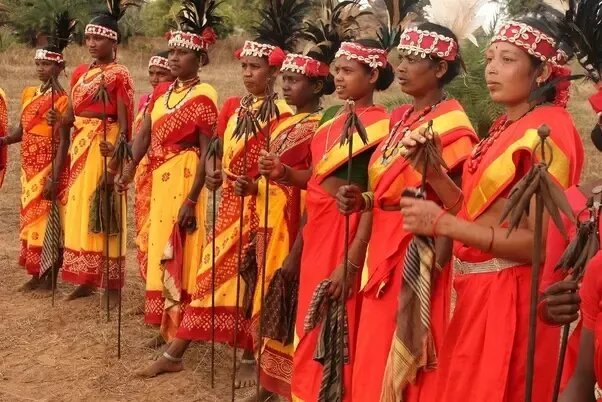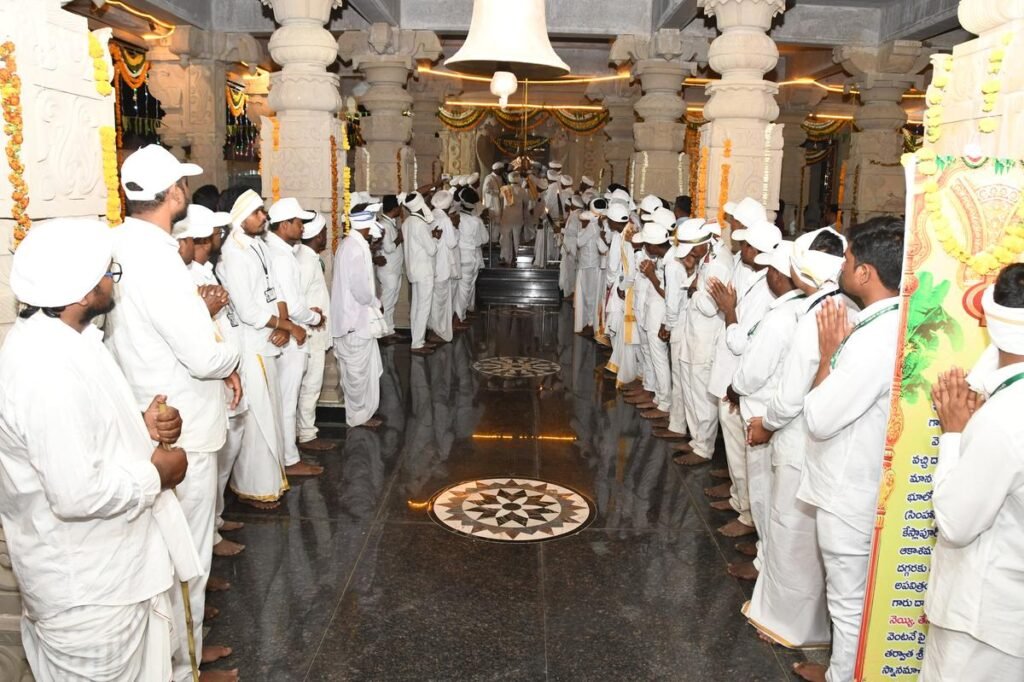About Gond Tribes
Gond Tribes are a group of aboriginal peoples. This tribe is designated as Scheduled Tribes (STs). The Gond tribes are also refer as “Kōītōr” (Kōī, Kōītōr). They have no cultural uniformity. They are the largest Adivasi Community in India and can be traced to the pre-Aryan era.
- They are found in the states of –
- Madhya Pradesh,
- Maharashtra,
- Chhattisgarh,
- Telangana,
- Andhra Pradesh,
- Bihar,
- Odisha.

The most developed are the Raj Gond, who once had an elaborate feudal order. Local rajas, linked by ties of blood or marriage to a royal house, exercised authority over groups of villages. The Raj Gond continue to exist outside the Hindu caste system, neither acknowledging the superiority of Brahmans nor feeling bound by Hindu rules such as the ban on killing cows.
The highlands of the Bastar region in southern Chhattisgarh are the home of three important Gond tribes –
- Muria –
- Known for their youth dormitories, or ghotul, in the framework of which the unmarried of both sexes lead a highly organized social life.
- They receive training in civic duties and in sexual practices.
- Bisonhorn Maria –
- Bisonhorn Maria, so called for their dance headdresses, live in less-hilly country and have more-permanent fields that they cultivate with plows and bullocks.
- Hill Maria –
- The last, who inhabit the rugged Abujhmar Hills, are the most isolated.
- Their traditional type of agriculture is slash-and-burn (jhum) cultivation on hill slopes; hoes and digging sticks are still used more than plows.
- The villages are periodically moved, and the commonly owned land of each clan contains several village sites occupied in rotation over the years.
Language and Culture
They speaks Gondi which is an unwritten language of the Dravidian family. The Gondi language is claimed to be related to the Telugu language. Some Gond have lost their own language and speak Hindi, Marathi, or Telugu, depending on which is dominant in their area.
The religion of all Gond peoples centers in the cult of clan and village deities, together with ancestor worship. Many Gond people practice their own indigenous religion, Koyapunem, while some follow Sarnaism. They worship ancestral deities known as Angadevs, which Brahminical Hindus claim are a representation of the goddess Mahakali.
According to the Gond tribe’s culture, the reaction to death of any Gond has been described as one of anger, because they believe death is caused by demons. They usually bury their dead, together with their worldly possessions, but due to partial Hinduization, their kings were occasionally cremated, as per Vedic practices.
Nagoba Jatara
It is the second biggest tribal festival in India held in Keslapur village, Indervelli Mandal Adilabad district, Telangana after the Sammakka Saralamma Jatara. This festival or carnival is celebrated by Mesaram clan of Gond tribes for 10 days. Tribal people from Maharashtra, Chhattisgarh, Orissa and Madhya Pradesh belonging to the Mesram clan offer prayers at the festival. Adivasi celebrates with music and more than 15 types of dances.
This festival held annually in the month of January-February. The chief deity at the festival is the ‘Nagoba’ (Sri Shek – Cobra). The Gusadi Dance is performed by the dancers from the Gond tribe is a major special attraction of the event.

This ritual is performed in the morning, the Mesram elders will place the sacred ‘jhari’, a 1,400-year-old water container before performing it’s puja. Few elder members of the Mesram clan go barefoot to the river Godavari a few days before the Jatara and bring the holy water, and keep it near the Banyan Tree in front of the Nagoba Temple. Before the start of the pujas, the Gonds continue to ‘purify’ the temple with Ganga Jal or water from the Godavari drawn at a spot called ‘Hastina Madugu’ where Nagoba is believed to have quenched his thirst after partaking the ‘naivedyam’.
This Jatara includes a ‘Bheting’ ceremony, where new brides are introduced into the clan. New brides come in possession wearing white saris and are led by the elder women to worship the Nagoba, after which they are recognized as a full-fledged member of the clan.
The naivedyam carried in the bamboo baskets is made of freshly harvested food grains. The bamboo denotes the connection of the Gonds with the jungles while the naivedyam offering is a matter of thanksgiving for the crop harvested. The women in the given group coming on pilgrimage to Jangubai caves prepare food at the spot, a small shed having been earmarked for the purpose.
In the night, the Gonds performed the Mahapuja of Nagoba, also known as Persa Pen or great god, which marks the actual beginning of the annual tribal fair.


Leave a Reply
You must be logged in to post a comment.